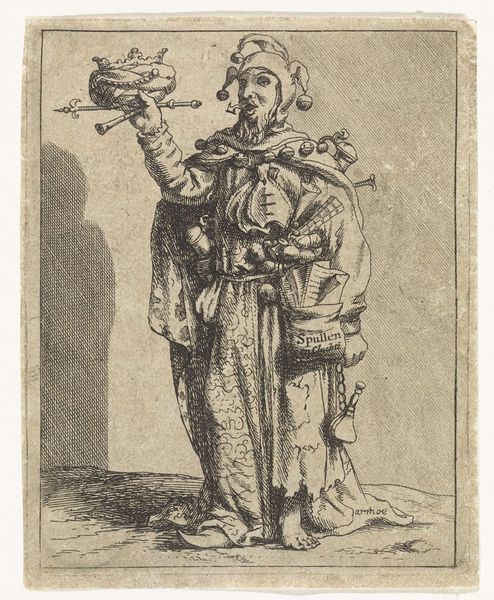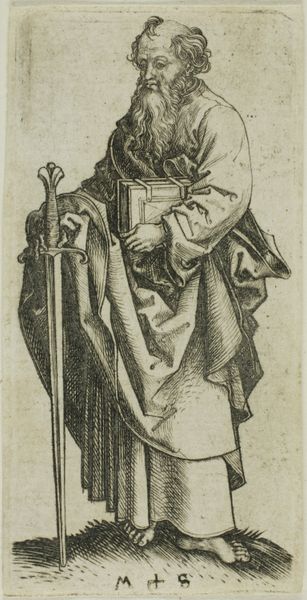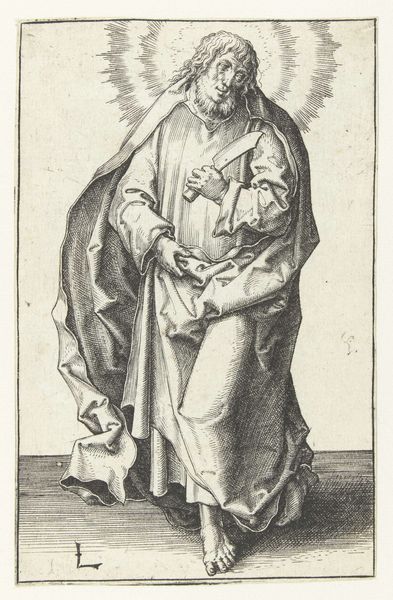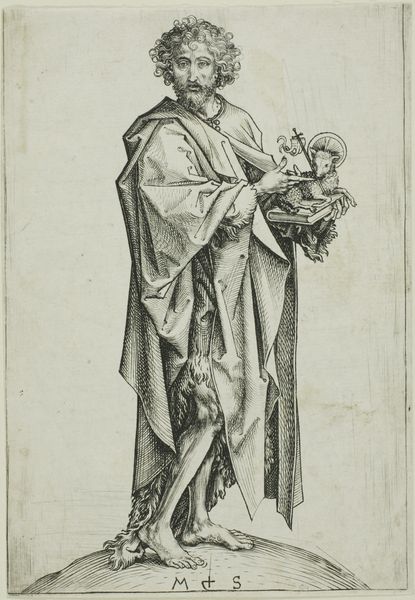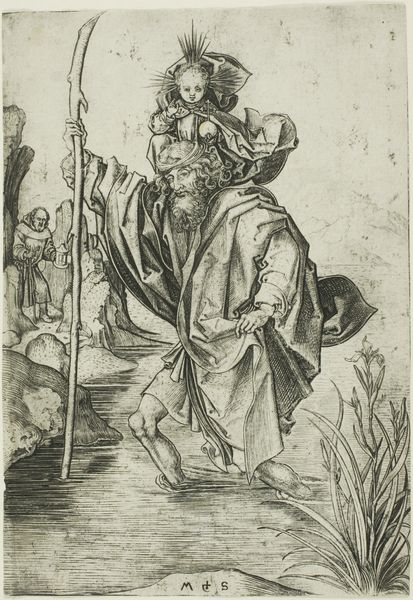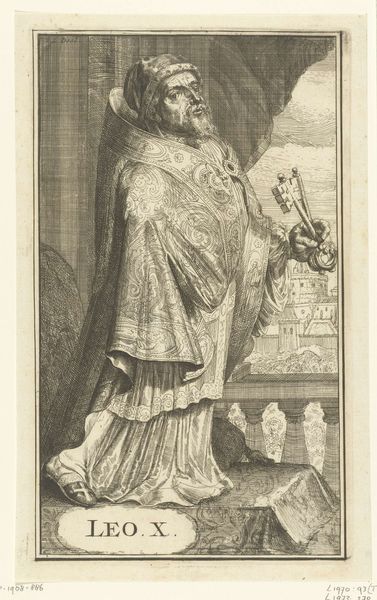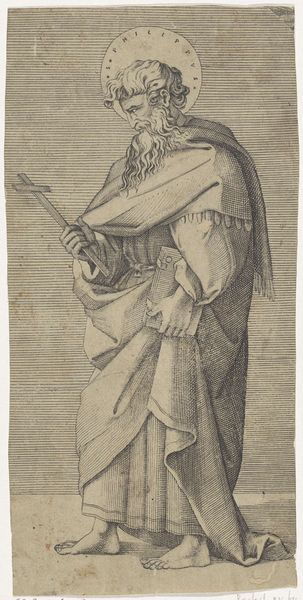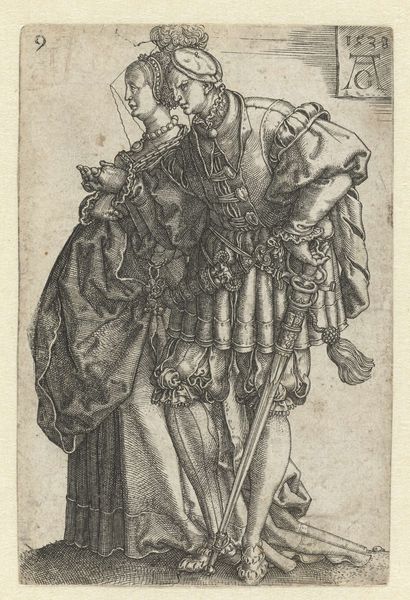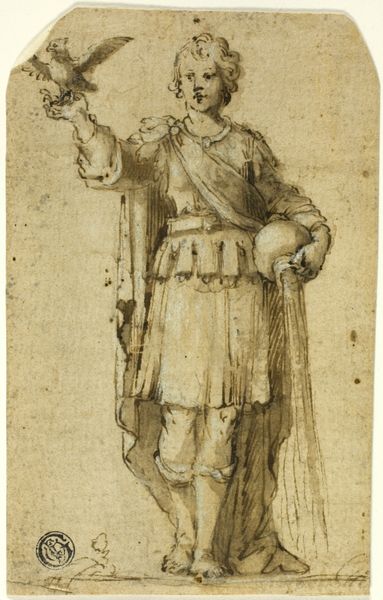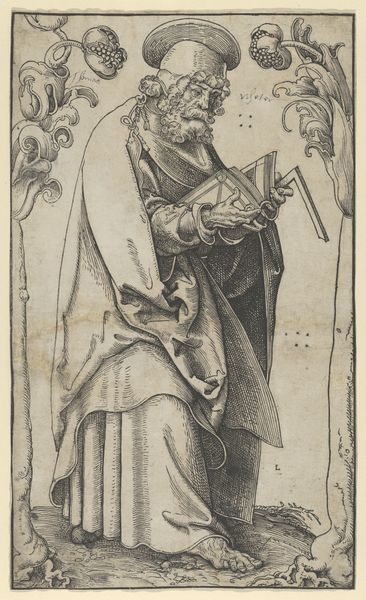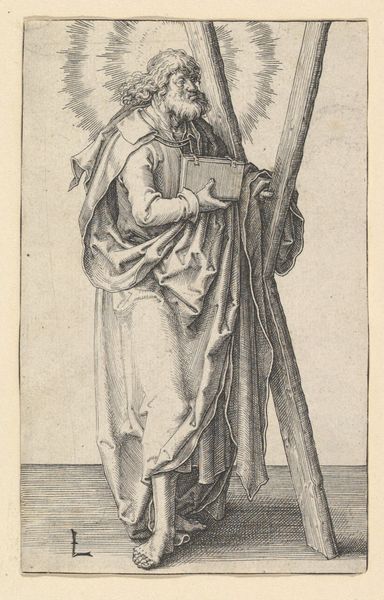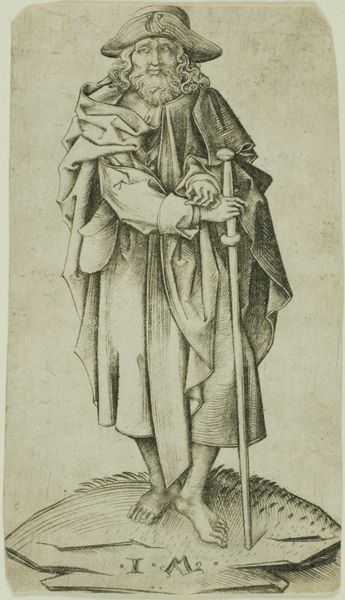
drawing, paper, ink
#
portrait
#
drawing
#
paper
#
ink
#
genre-painting
Dimensions: height 99 mm, width 77 mm
Copyright: Rijks Museum: Open Domain
Bernard Picart created this drawing of a standing jester in the early 18th century using pen and gray ink, enriched with gray wash. The jester, adorned with bells and holding symbolic objects, embodies folly and satire. Consider the jester's cap, its bells jingling with each movement, mocking the solemnity of the court. We can trace this figure back to ancient Roman festivals, where fools held a sacred role, bridging the gap between the mortal and divine through laughter and ridicule. Observe how the jester's gestures—the exaggerated expression, the objects that he is holding—echo across time. The jester's features also invoke older traditions, from the medieval Feast of Fools to the Commedia dell'Arte's zanni. This figure reminds us that there's a non-linear, cyclical progression; symbols resurface, evolve, and take on new meanings in different historical contexts.
Comments
No comments
Be the first to comment and join the conversation on the ultimate creative platform.
